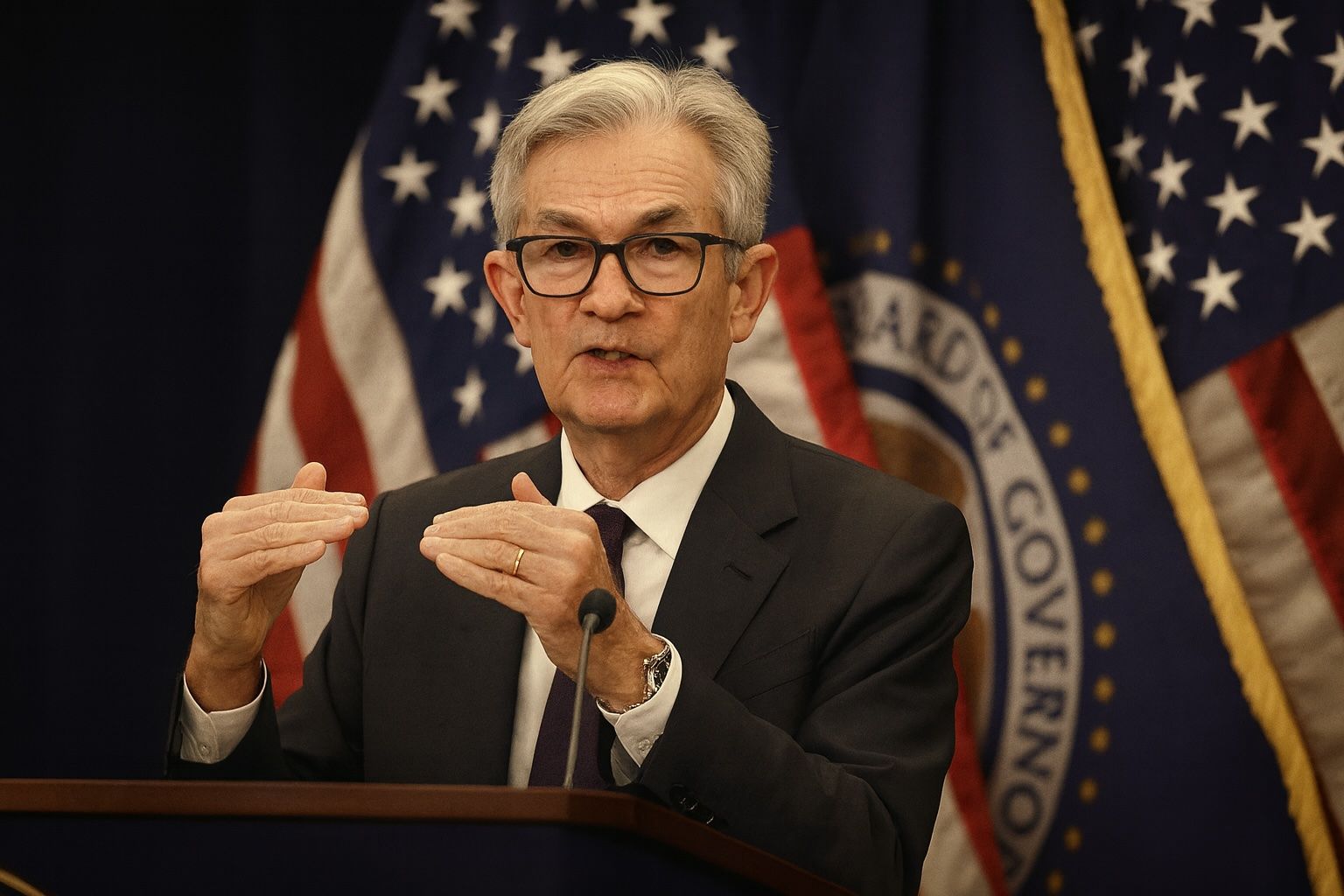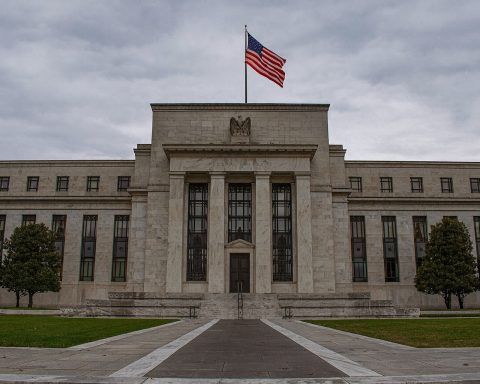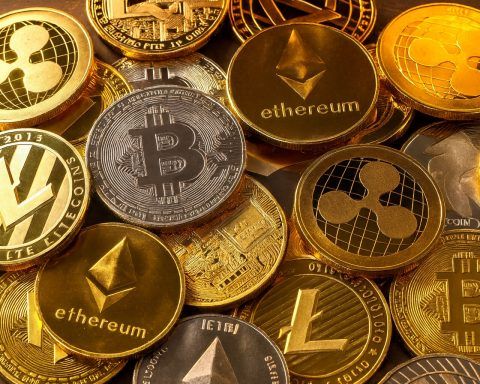- Fed Chair Hints at More Easing: In a closely watched speech in Philadelphia, Federal Reserve Chair Jerome Powell indicated the Fed will “likely cut its key interest rate twice more this year” (after a first cut in September) amid a slowing job market [1]. He noted the outlook for inflation and employment “has not changed much” since the last Fed meeting [2], reinforcing expectations of additional quarter-point rate reductions by December.
- Jobs vs. Prices – Fed Shifts Focus: Powell warned that a sharp hiring slowdown poses a growing risk to the economy, saying “rising downside risks to employment have shifted our assessment of the balance of risks” [3]. While inflation remains above the 2% target, he suggested the Fed is now slightly more concerned with stabilizing the job market than cooling prices [4].
- Tariff-Driven Inflation Jitters: U.S. inflation is running around 2.9% – elevated by new import tariffs – but Powell noted “outside [of those tariffs] there aren’t broader inflationary pressures” keeping prices high [5]. Economists expect core inflation to ease to ~2.5% next year, though tariff costs could push it toward 3.3% by 2026, risking unmoored inflation expectations [6]. Harvard economist Karen Dynan cautions that if inflation stays sticky, aggressive rate cuts now “are going to be seen as a mistake” [7].
- Tangled Economy – “Something’s Got to Give”: Powell described an economy with “stronger-than-expected growth” (~4% GDP in Q3) and surging productivity, yet faltering hiring [8]. “There are conflicting forces… tariffs and reduced immigration [versus] an AI investment boom,” said EY-Parthenon economist Gregory Daco [9]. “Something’s got to give,” Fed Governor Christopher Waller remarked, noting “you can’t have negative job growth and 4% GDP growth… Either the labor market rebounds… or GDP growth is going to pull back” [10]. Waller favors more cuts to protect jobs – but in cautious 0.25% steps to avoid a policy mistake [11].
- Fed Split on Next Steps: Policymakers are divided. Some officials worry inflation (still above 2%) could stay too high if policy eases prematurely [12]. Others see unemployment creeping up and want to cushion the labor market. Philadelphia Fed President Anna Paulson, for example, calls two more rate cuts this year “appropriate” and doesn’t want to “step on a productivity boom” by over-tightening [13]. Growth continues, but on a “relatively narrow base,” she warned, with AI-driven investment and wealthy consumers doing most of the lifting and other sectors lagging [14].
- Markets Jittery, then Reassured: Global investors braced for Powell’s speech. Early Tuesday, U.S. stock futures fell ~0.5–0.9% and European shares dropped ~0.7% as traders awaited his comments [15]. Japan’s Nikkei index plunged 2.6% amid domestic political turmoil and simmering U.S.–China trade tensions [16]. Safe-haven gold soared to record highs above $4,100/oz (spot gold hit $4,190 intraday) [17], and 10-year Treasury yields dipped to ~4.03% [18] as markets bet on Fed easing. However, once Powell spoke, stocks reversed losses. The Dow Jones Industrial Average ended up +0.7% and the S&P 500 +0.2% Tuesday, as investors digested his remarks alongside strong bank earnings [19]. Powell noted the economy “may be on a somewhat firmer trajectory than expected” even as the labor market remains in “low-hiring, low-firing doldrums” [20] – a balanced message that calmed Wall Street. “The bulls remain fully in charge,” said Michael James of Rosenblatt Securities, adding that nothing in Powell’s comments shook the market’s upbeat momentum [21].
- Fed May Halt QT Soon: Powell also signaled a potential shift in Fed strategy beyond interest rates. He said the central bank “may soon end its balance sheet runoff” – meaning it could stop shrinking its $6.6 trillion bond portfolio in coming months [22] [23]. The Fed has been allowing $40 billion in Treasurys and mortgage securities to roll off monthly; ending that policy (QT, or quantitative tightening) would remove some upward pressure on long-term borrowing costs [24]. This hint further boosted investor sentiment, as an end to QT could help keep mortgage and loan rates lower.
- Shutdown Data Void: Powell’s speech comes amid a drought of government data due to the ongoing federal shutdown. The September U.S. jobs report was never released, and other key indicators have been delayed [25]. Powell acknowledged the lack of fresh data but said the Fed’s outlook hasn’t materially changed since September [26]. An updated inflation reading (Consumer Price Index) is now scheduled for Oct. 24 – just days before the Fed’s next meeting on Oct. 28–29 [27]. Fed officials are relying on private-sector reports (like payroll processor ADP, which pointed to job losses in September) and anecdotes from businesses to gauge the economy’s health [28].
- Trade War Wildcard: Trade policy is adding another wildcard for the Fed. Powell noted that new tariffs have temporarily lifted inflation to 2.9% [29]. In fact, just last week President Trump announced 100% tariffs on all Chinese imports starting Nov. 1, shocking markets [30]. The S&P 500 fell ~2% on that news as analysts warned the move could “fuel U.S. inflation and slow global growth”, potentially undoing the truce in the trade war [31]. Powell has downplayed the immediate impact of the latest tariffs – focusing instead on underlying price trends – but he conceded that past trade actions have complicated the Fed’s job by pushing prices higher and denting business confidence [32].
- Looking Ahead – More Cuts on Table: The Fed’s next policy decision is just two weeks away. Markets overwhelmingly expect another 0.25% rate cut at the Oct. 28–29 Federal Open Market Committee meeting [33], which would bring the target rate down to ~3.75–4.0%. Futures also imply a high chance of one more cut in December. Fed projections from last month point to two more cuts in 2025 and one additional cut in 2026 [34], assuming inflation continues to ease toward 2%. Powell’s latest remarks reinforce that trajectory: the Fed is poised to gently lower borrowing costs to support employment so long as inflation is “contained.” Analysts note the Fed is trying to thread the needle – preventing a hard economic downturn without reigniting price spirals. “I think there is a good chance inflation expectations become unanchored… if that proves to be the case, the Fed cuts…are going to be seen as a mistake,” Dynan warns of moving too fast [35]. But for now, with inflation off its peaks and recession risks rising, the Fed is tilting dovish. Barring a flare-up in prices or other shocks, Powell’s high-stakes balancing act suggests a modest rate cut later this month – a policy path he hopes will extend the economic expansion into 2026 while gradually bringing inflation back to target [36] [37].
Sources: Fed Chair Powell NABE speech coverage (CNBC/WSJ/AP) [38] [39]; Reuters analysis of Fed outlook and expert quotes [40] [41]; Associated Press report on Powell’s remarks and Fed policy shift [42] [43]; Dow Jones Market summary and global market reaction [44] [45]; TS² TechStock news digest on Fed and market trends [46] [47].
References
1. apnews.com, 2. apnews.com, 3. apnews.com, 4. apnews.com, 5. apnews.com, 6. www.reuters.com, 7. www.reuters.com, 8. ts2.tech, 9. www.reuters.com, 10. www.reuters.com, 11. www.reuters.com, 12. www.reuters.com, 13. www.reuters.com, 14. www.reuters.com, 15. www.fastbull.com, 16. www.fastbull.com, 17. www.fastbull.com, 18. www.fastbull.com, 19. www.reuters.com, 20. www.reuters.com, 21. www.reuters.com, 22. www.reuters.com, 23. apnews.com, 24. apnews.com, 25. www.reuters.com, 26. apnews.com, 27. www.reuters.com, 28. www.reuters.com, 29. apnews.com, 30. ts2.tech, 31. ts2.tech, 32. www.reuters.com, 33. www.reuters.com, 34. apnews.com, 35. www.reuters.com, 36. ts2.tech, 37. www.reuters.com, 38. apnews.com, 39. www.reuters.com, 40. www.reuters.com, 41. www.reuters.com, 42. apnews.com, 43. apnews.com, 44. www.fastbull.com, 45. www.reuters.com, 46. ts2.tech, 47. ts2.tech





